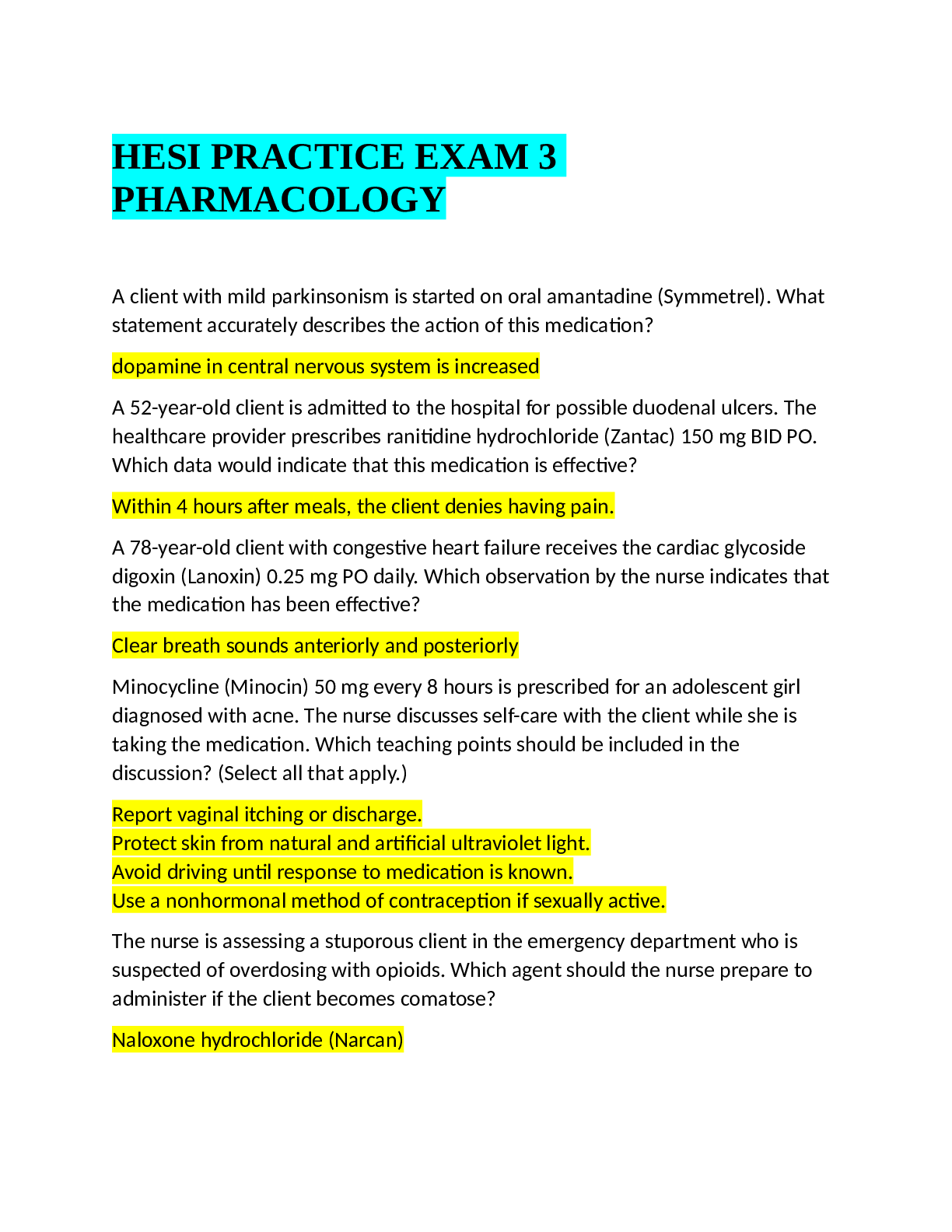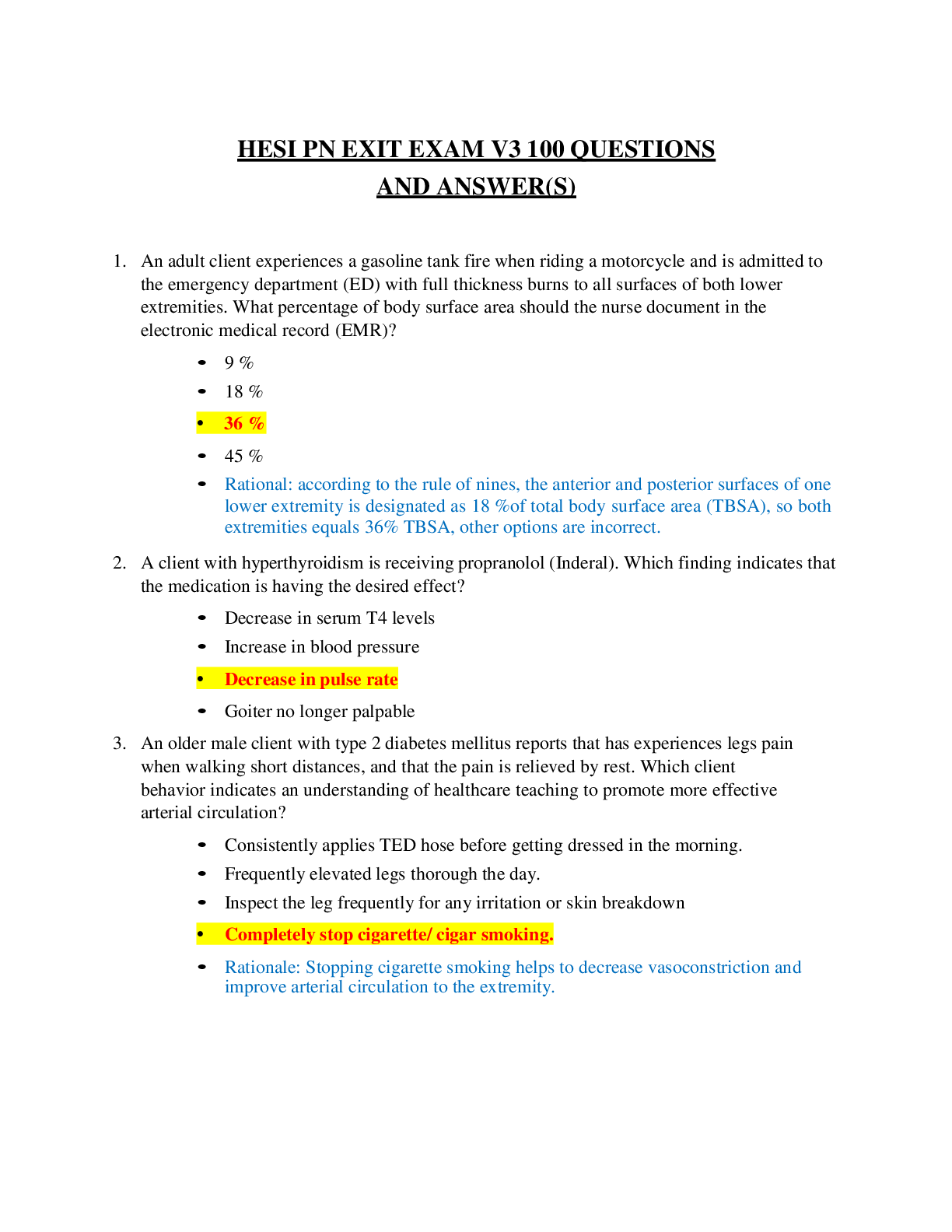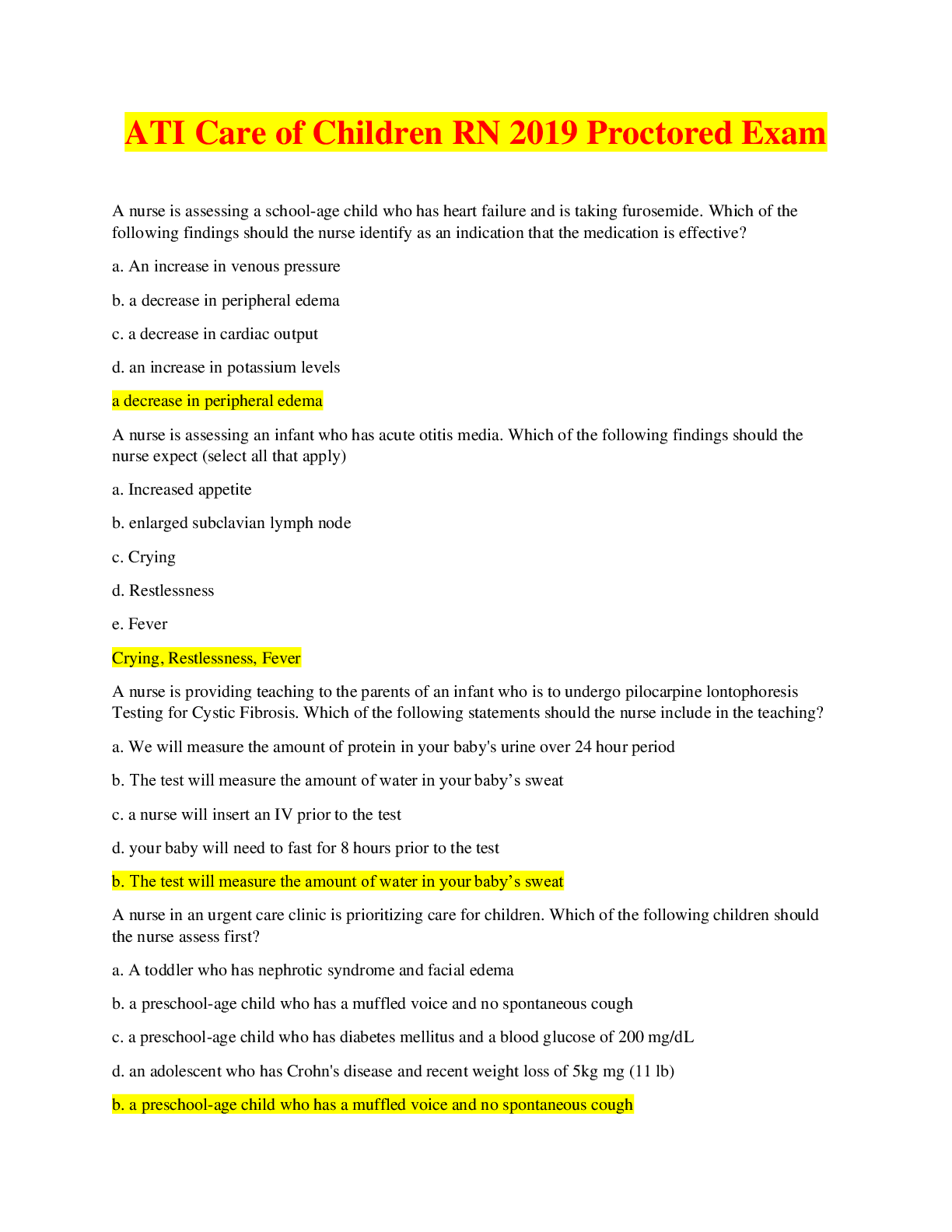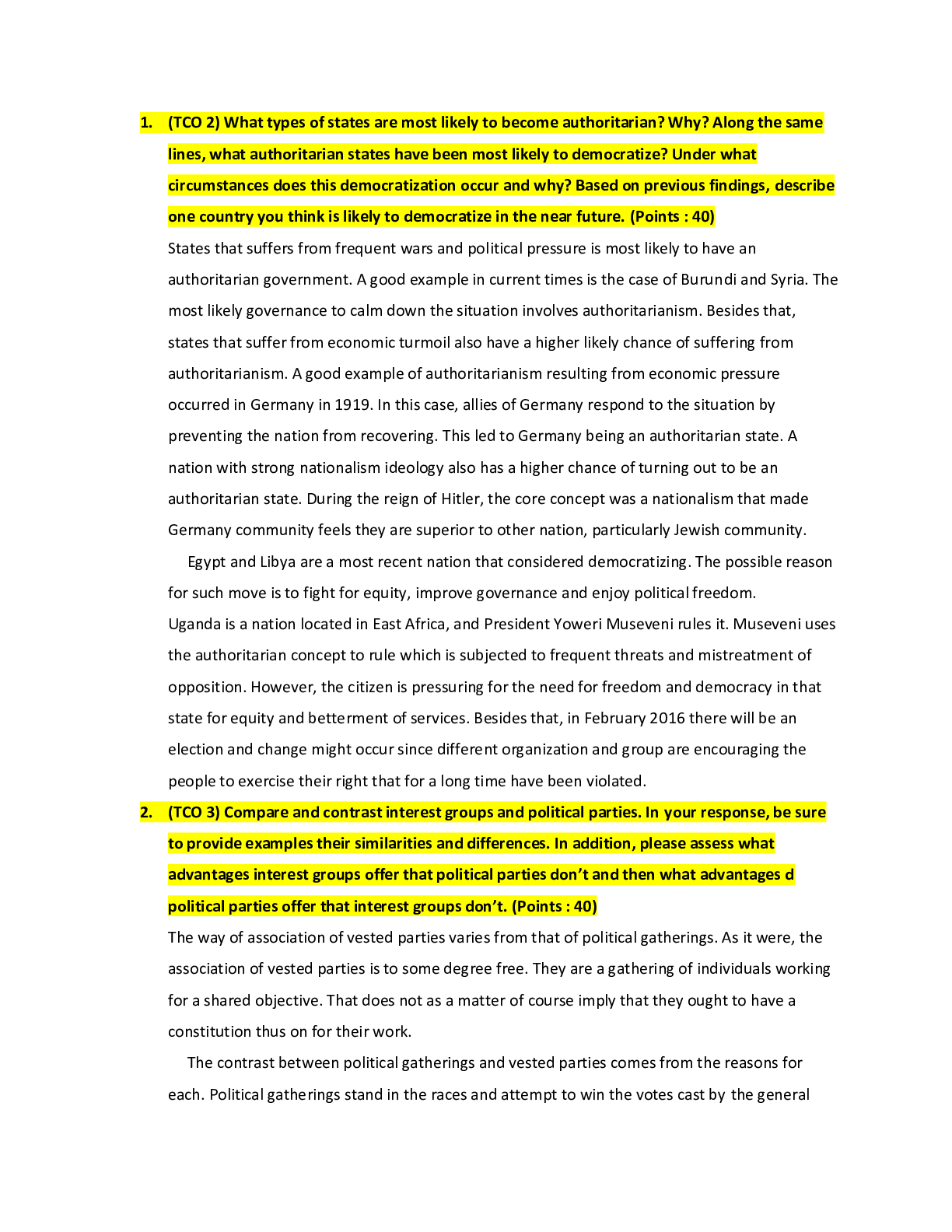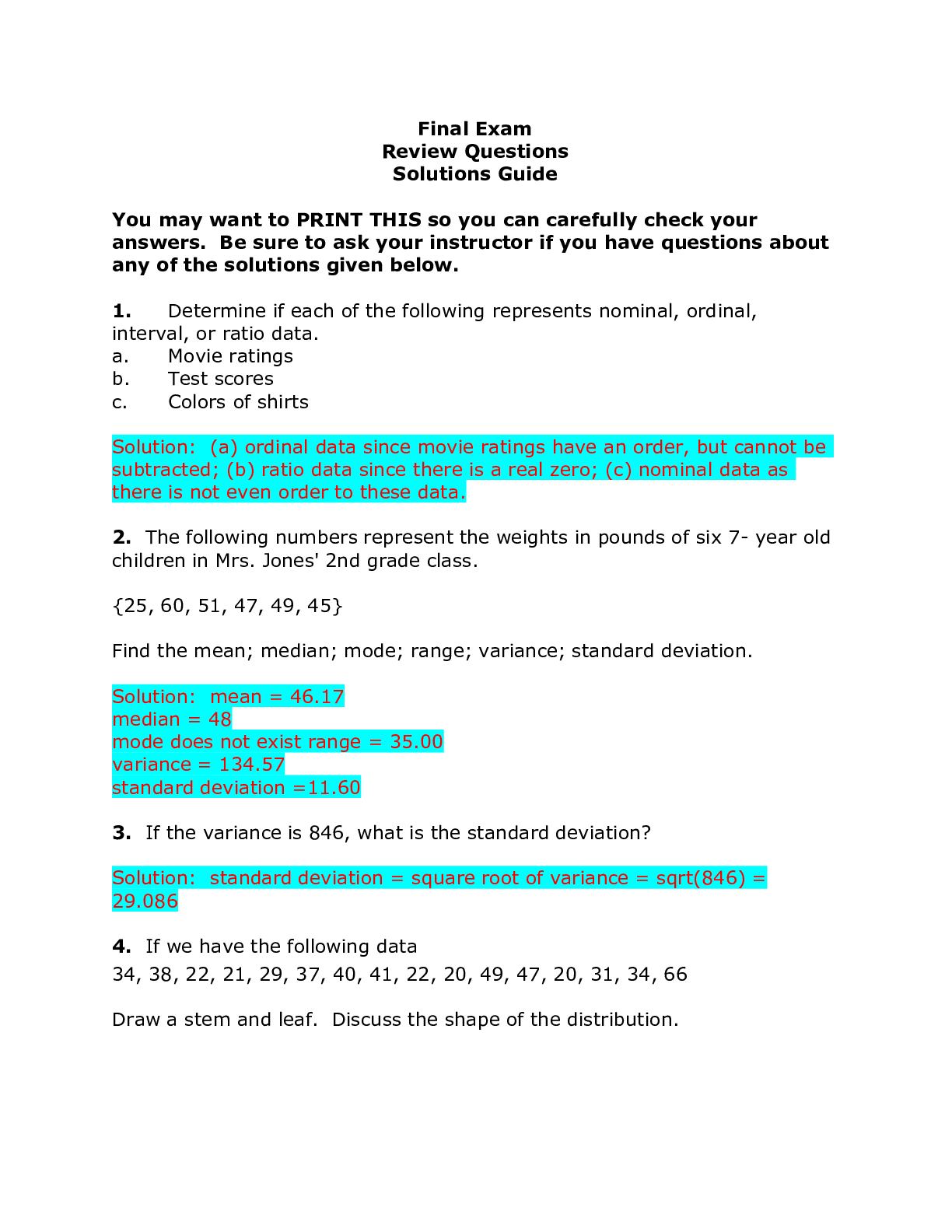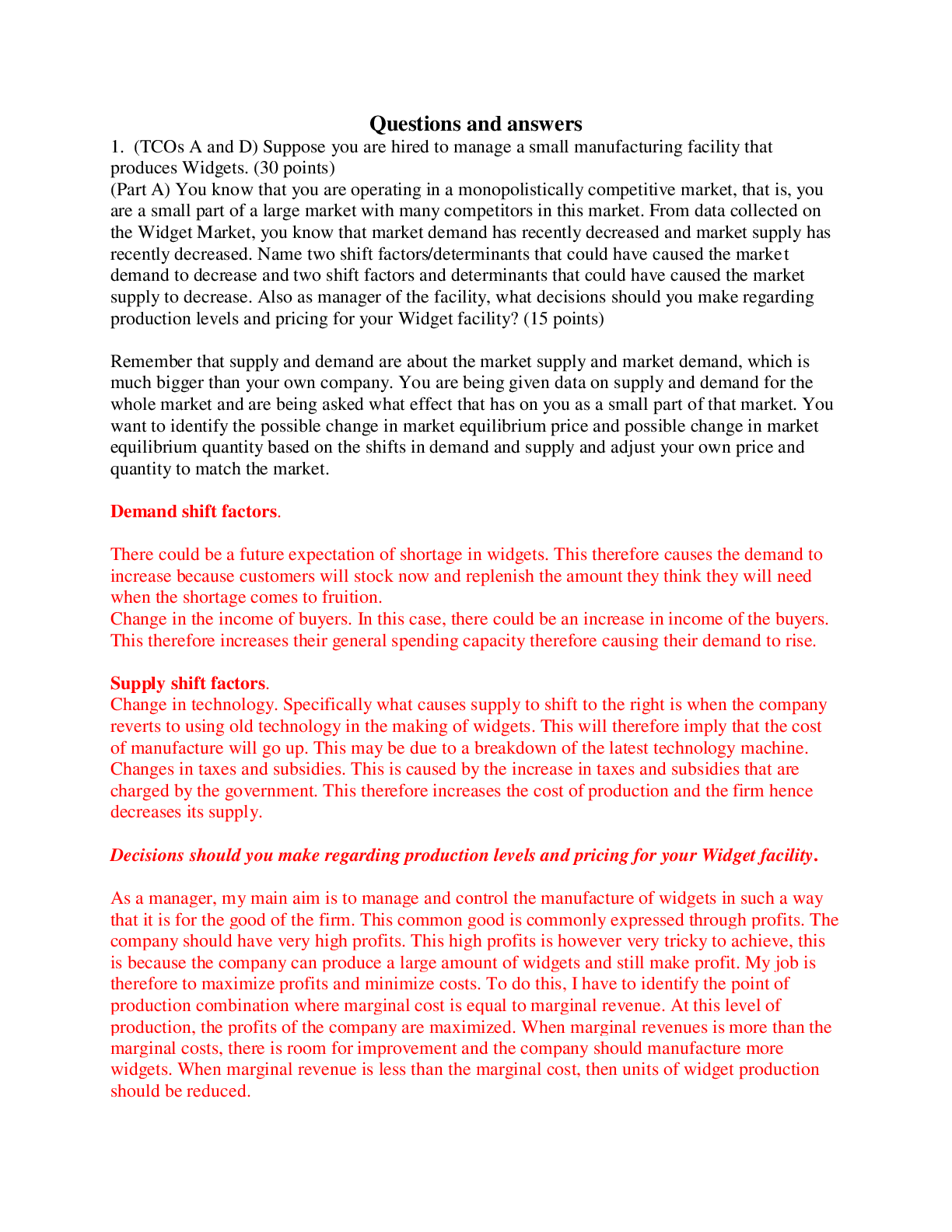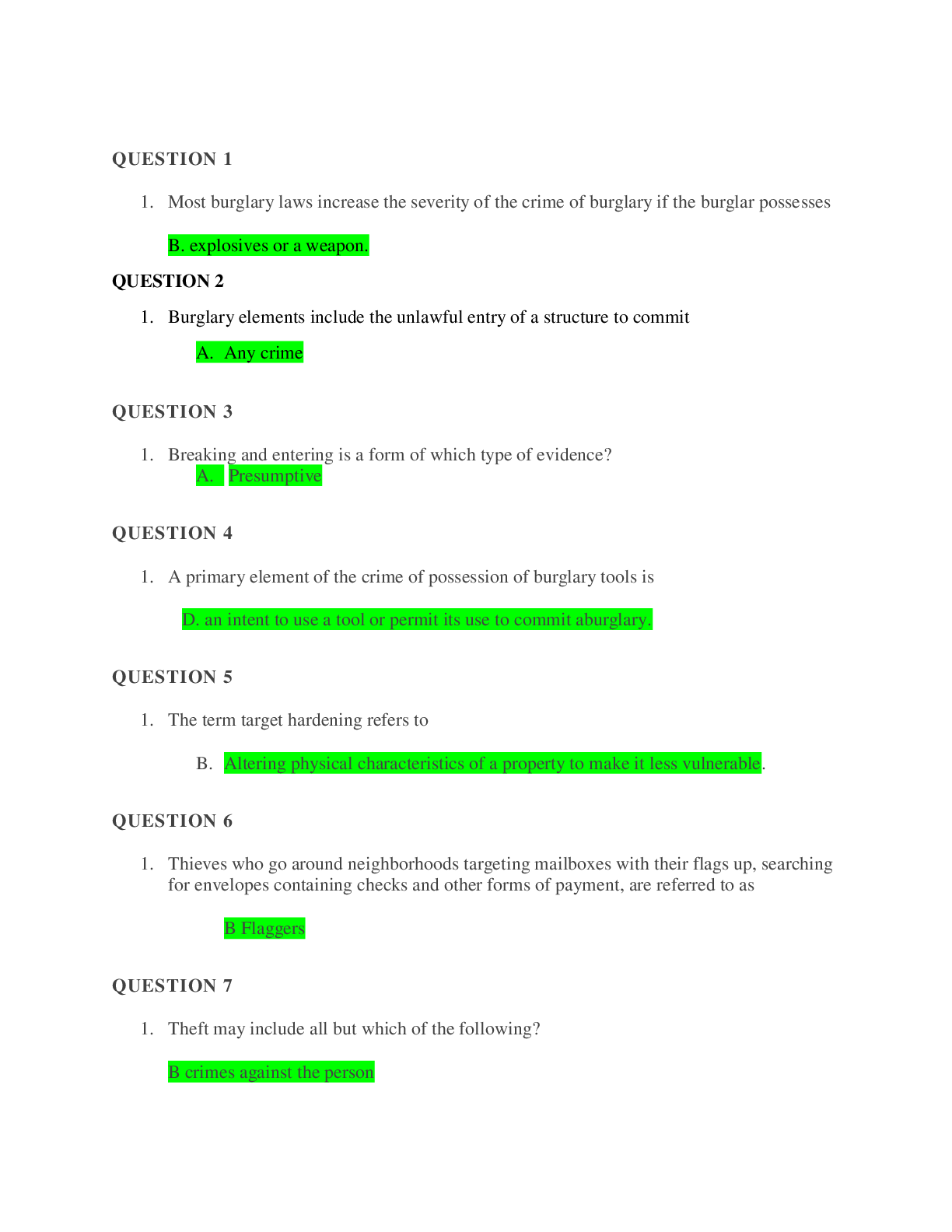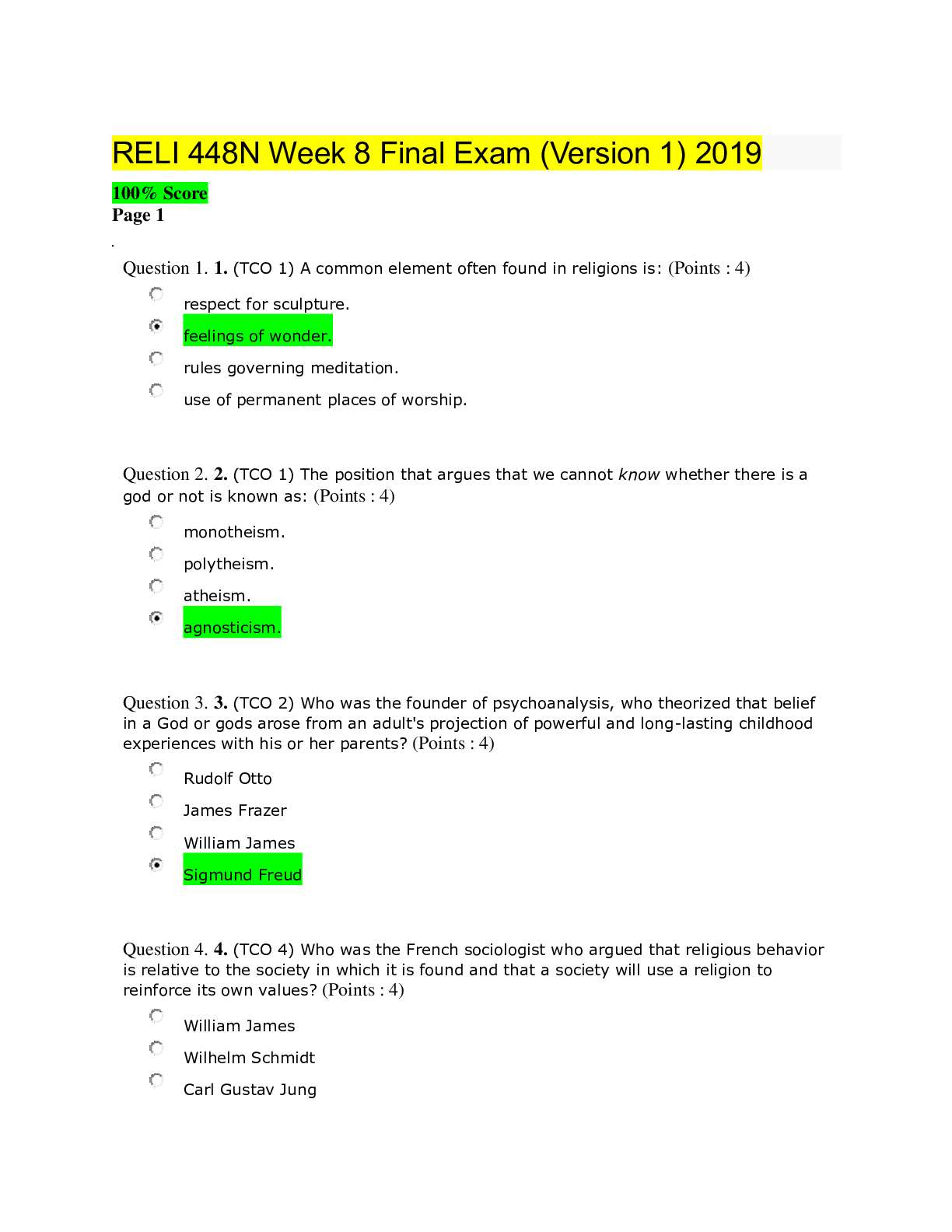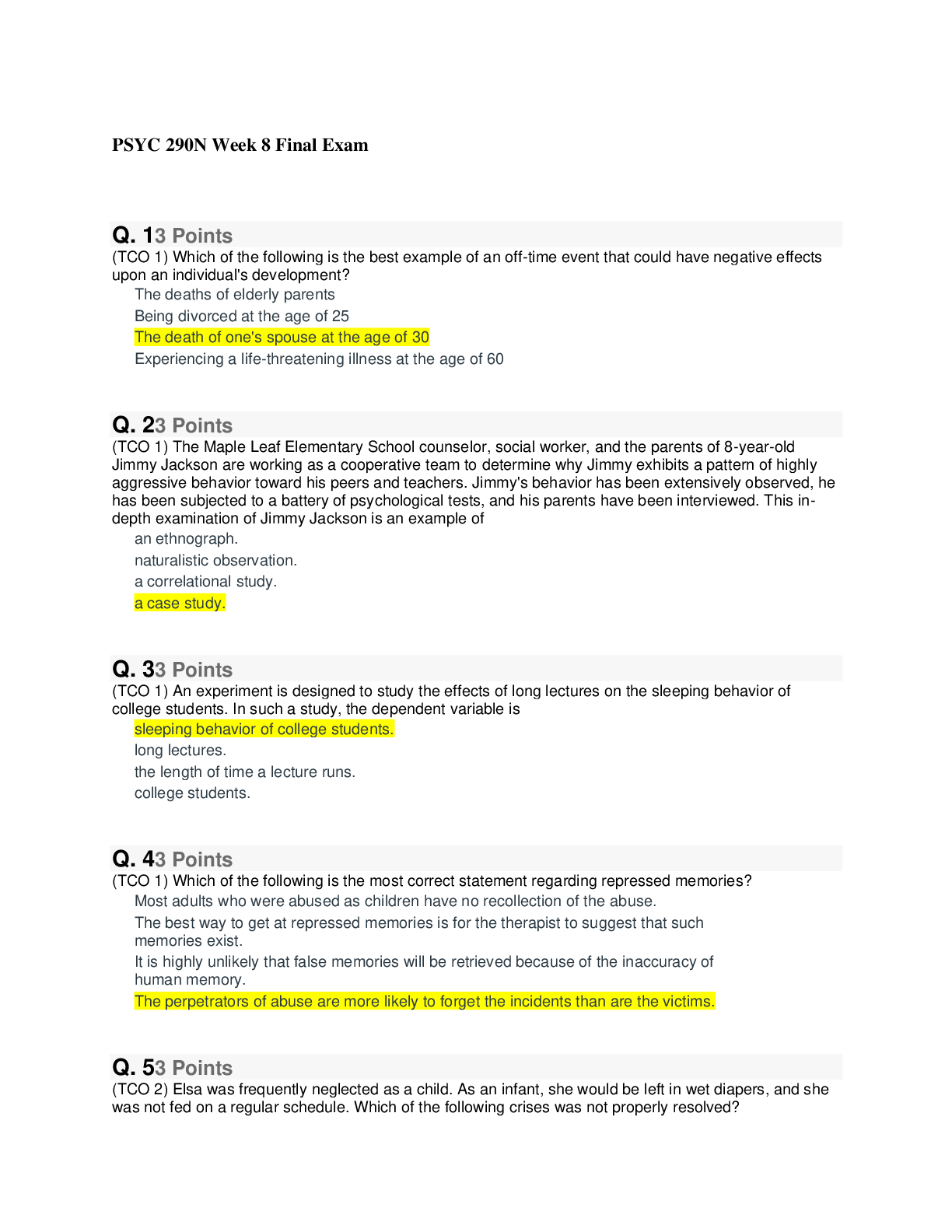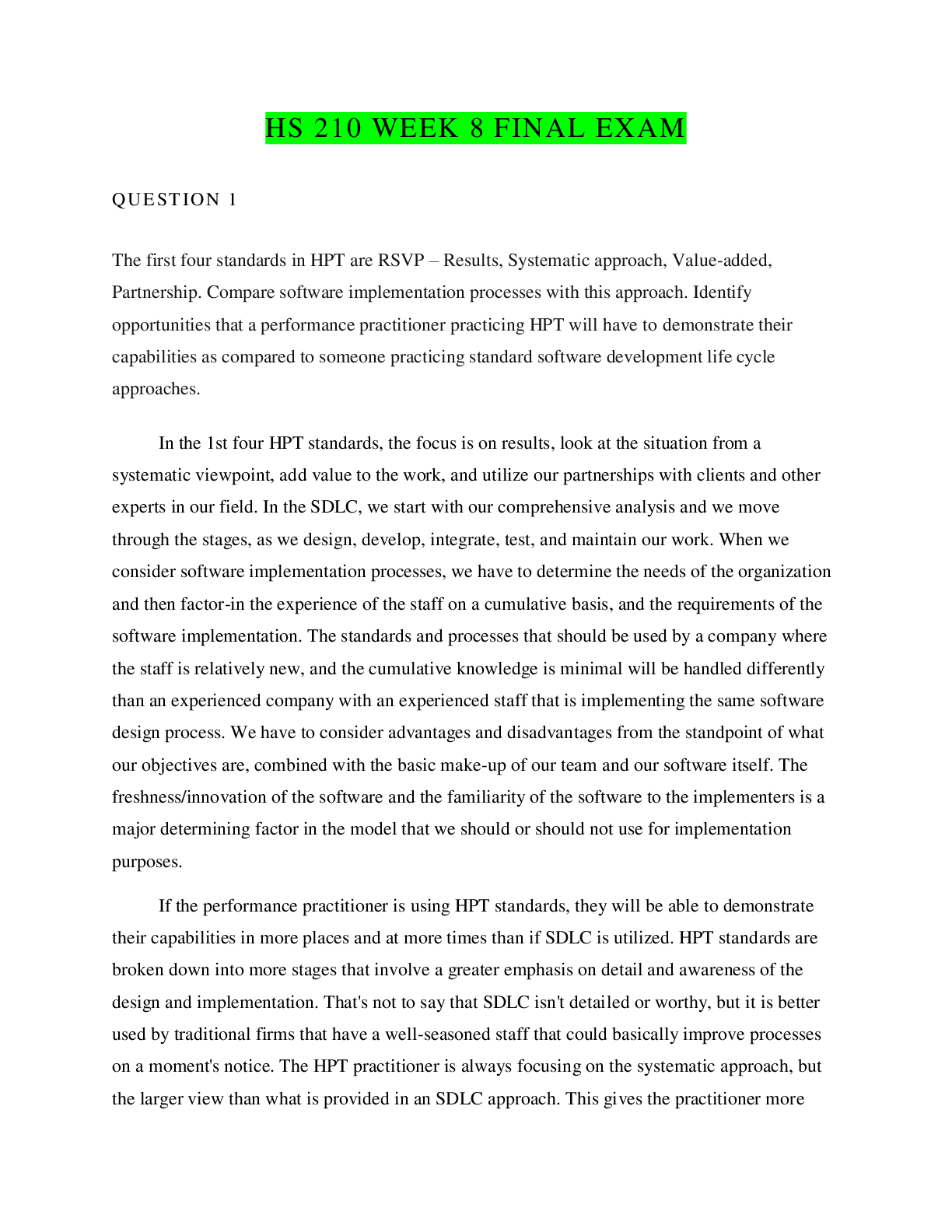BIOS 255 Week 8 Final Exam (Essay & Explanatory)_Download To Score An A.
Document Content and Description Below
BIOS 255 Week 8 Final Exam (Essay & Explanatory) Question: Describe innate and adaptive immune systems, how they work and how they interact. Question: Explain the various subclasses of antibodies �... � how they are similar, how they differ. Question: Define ventilation, external respiration and internal respiration. Be sure to identify their functions and were they occur. Question: Explain the neural control of ventilation including brain centers, sensory and motor signals. Question: Describe how oxygen and carbon dioxide are transported in the blood with a special emphasis on the factors that affect the loading/unloading of these gases in the lungs vs. tissues. Question: List and briefly describe the major functions of the various subclasses of T-cells. Question: Explain the similarities and differences between primary and secondary responses of the adaptive immune response Question: Functions of the Spleen Question: All muscles used in exhaling and inhaling Question: Know the characteristics of the thymus Question: Know the components of the lymphatic system Question: Know the conduction system for air Question: Where gas exchange occurs in the lung and how this occurs Question: Function of RBCs, T-cells, B-cells, Cytotoxic T cells, Natural killer cells Question: Return of lymph to venous circulation. Question: Know the process of inhalation and exhalation (the steps involved) Question: Describe the feedback mechanism involved in erythropoiesis. Question: Describe the cardiac cycle (include conduction, contraction, heart sounds and EKG information). Question: Describe the factors that increase blood pressure (negative feedback involved in blood pressure regulation). Question: Describe the responses involved in non-specific immunity. Question: Describe cell-mediated immunity (antigen presentation, antigen recognition, activation and cellular response). Include both CD8 and CD4 T cells. Question: Describe antibody-mediated immunity (antigen presentation, antigen recognition, activation and cellular response). Question: Describe the events, pressures and muscles involved in inhalation and exhalation. Question: Describe how breathing is regulated through the negative feedback control of PCO2, PO2 and pH. Question: Explain the difference between nonspecific and specific defense and the role of lymphocytes in each of the immune response. Question: Identify the major components of the lymphatic system and explain their functions. Question: List the body’s nonspecific defenses, and explain the function of two of them, also describe the components and mechanisms. Question: Discuss the types of T cells and the role played by each in the immune response, and explain the mechanisms of their activation. Question: Describe the mechanisms of B cell activation and the differentiation of plasma cells and memory B cells. Question: Describe the structure of an antibody, and discuss the types and functions of antibodies in body fluids and secretions. Question: Identify the organs forming the respiratory passageway(s) in descending order until the alveoli are reached. Distinguish between conducting and respiratory zone structures. Question: List several physical factors that influence pulmonary ventilation and list the various lung volumes and capacities. Question: Describe how oxygen and carbon dioxide are ……… in the blood. Question: Compare the causes and consequences of such conditions as chronic bronchitis, emphysema, asthma, COPD, ‘black lung,’ and lung cancer. [Show More]
Last updated: 2 years ago
Preview 1 out of 9 pages

Buy this document to get the full access instantly
Instant Download Access after purchase
Buy NowInstant download
We Accept:

Reviews( 0 )
$15.00
Can't find what you want? Try our AI powered Search
Document information
Connected school, study & course
About the document
Uploaded On
Apr 03, 2021
Number of pages
9
Written in
Additional information
This document has been written for:
Uploaded
Apr 03, 2021
Downloads
0
Views
73



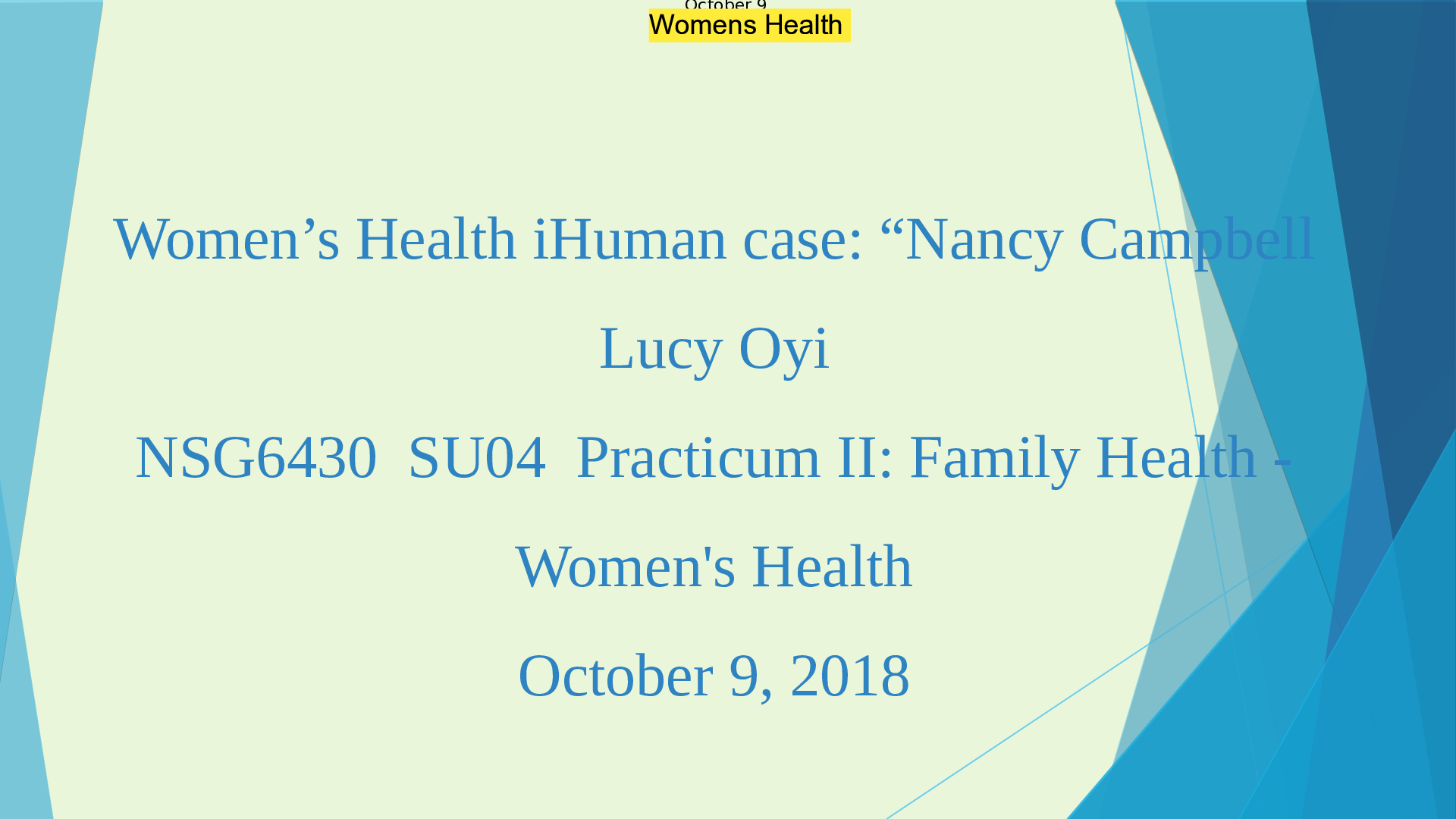
.png)
